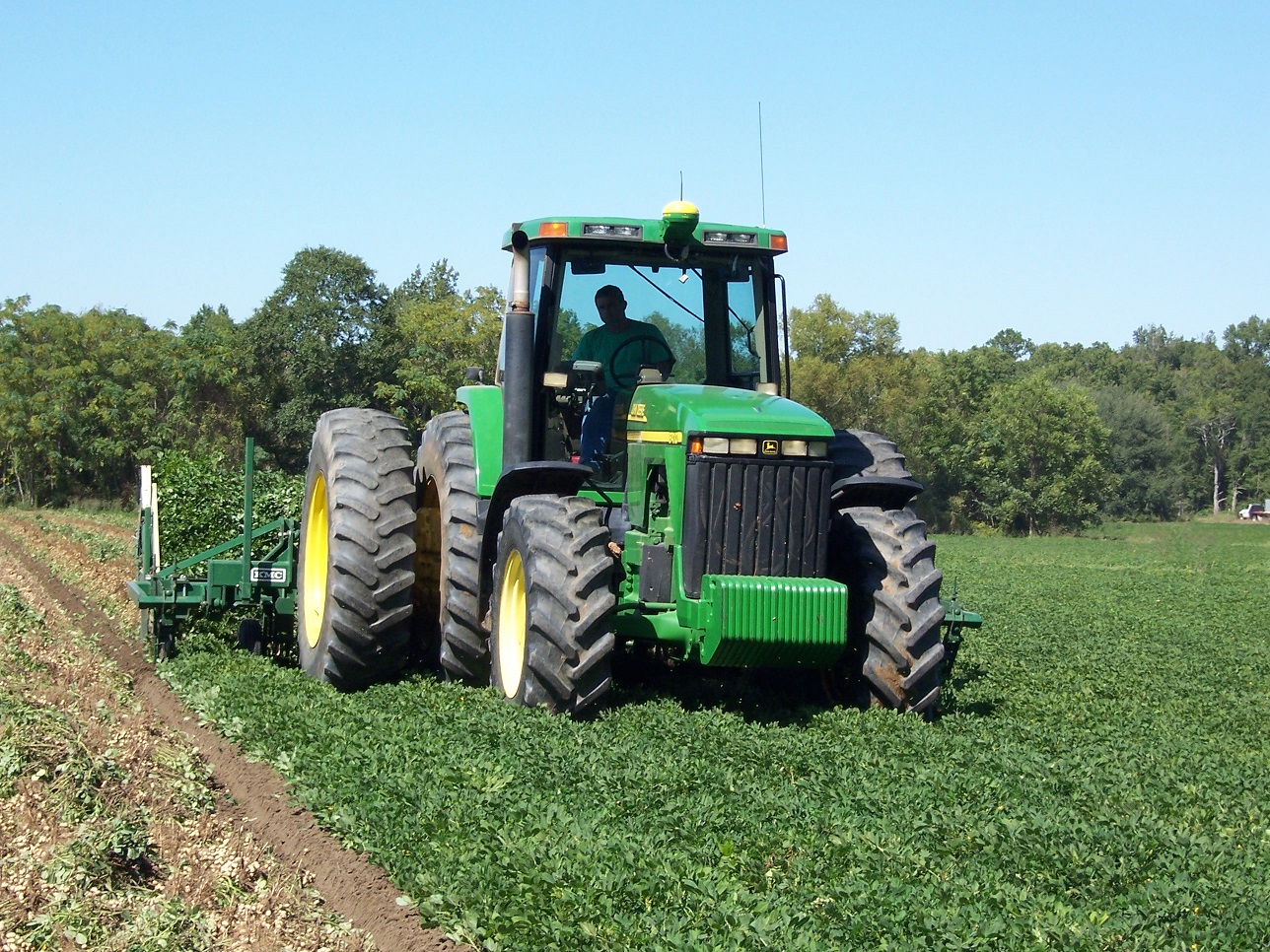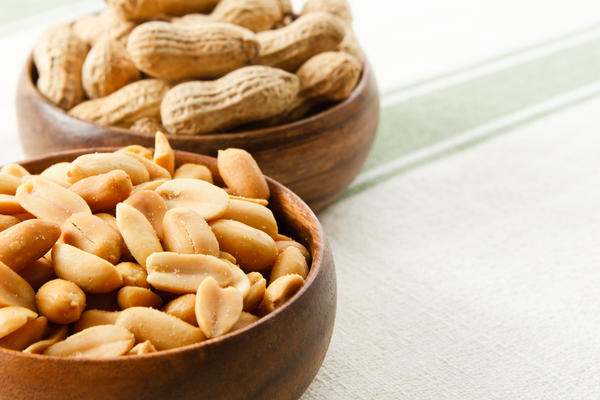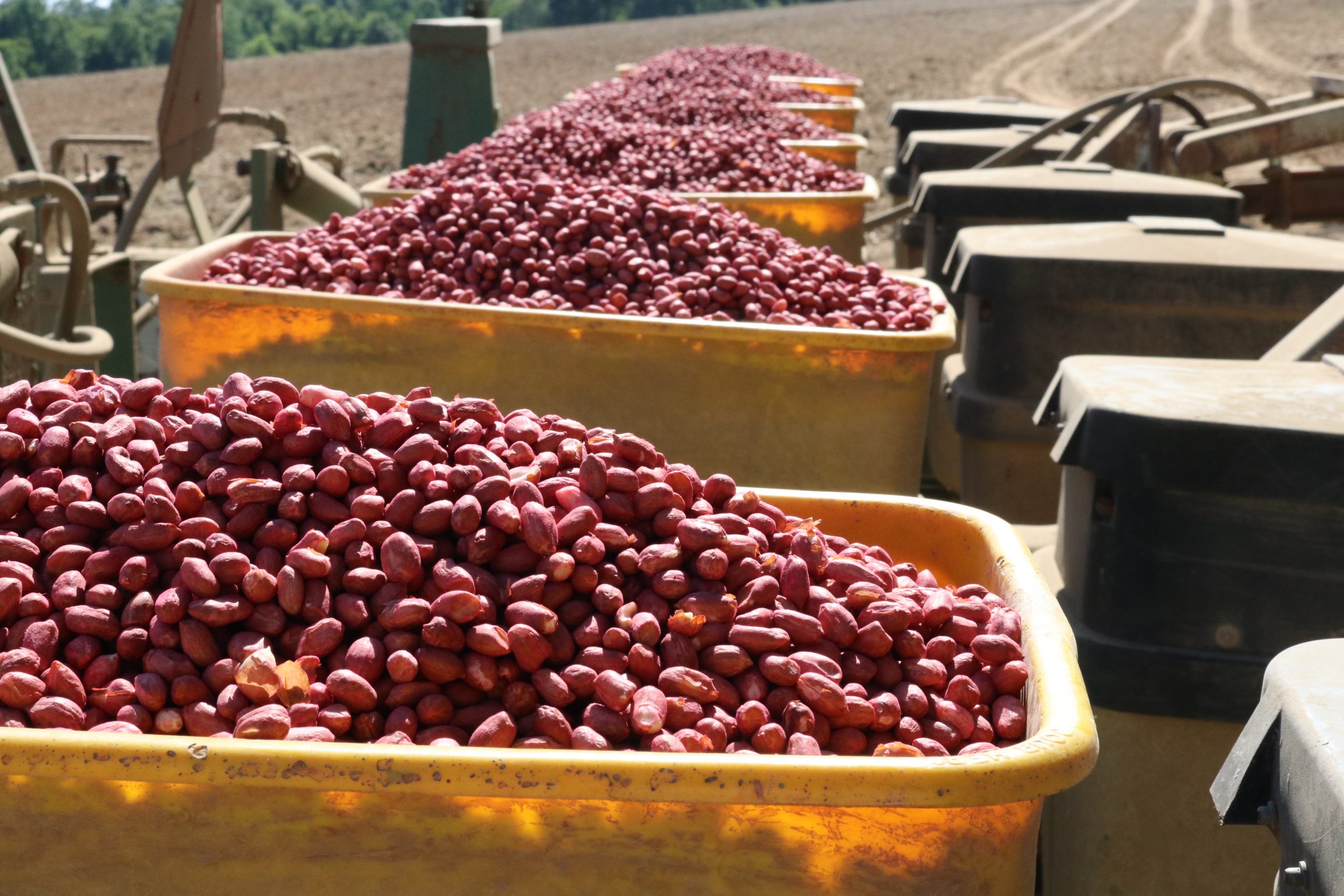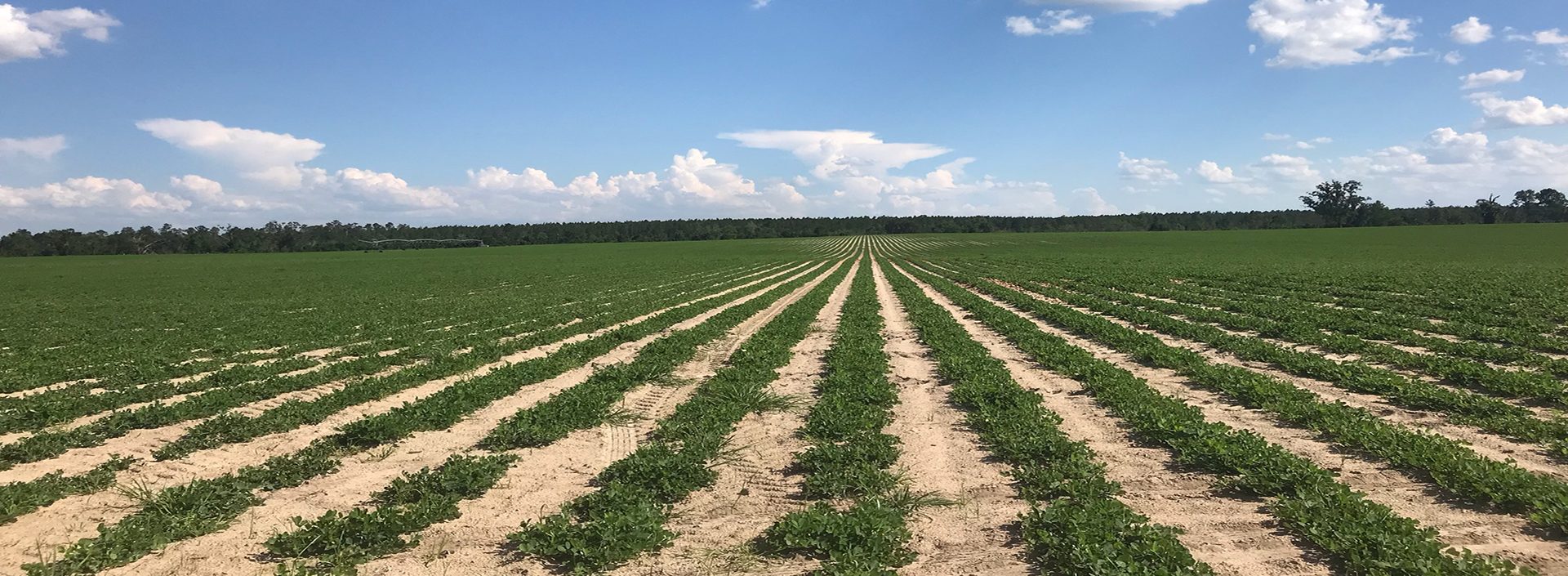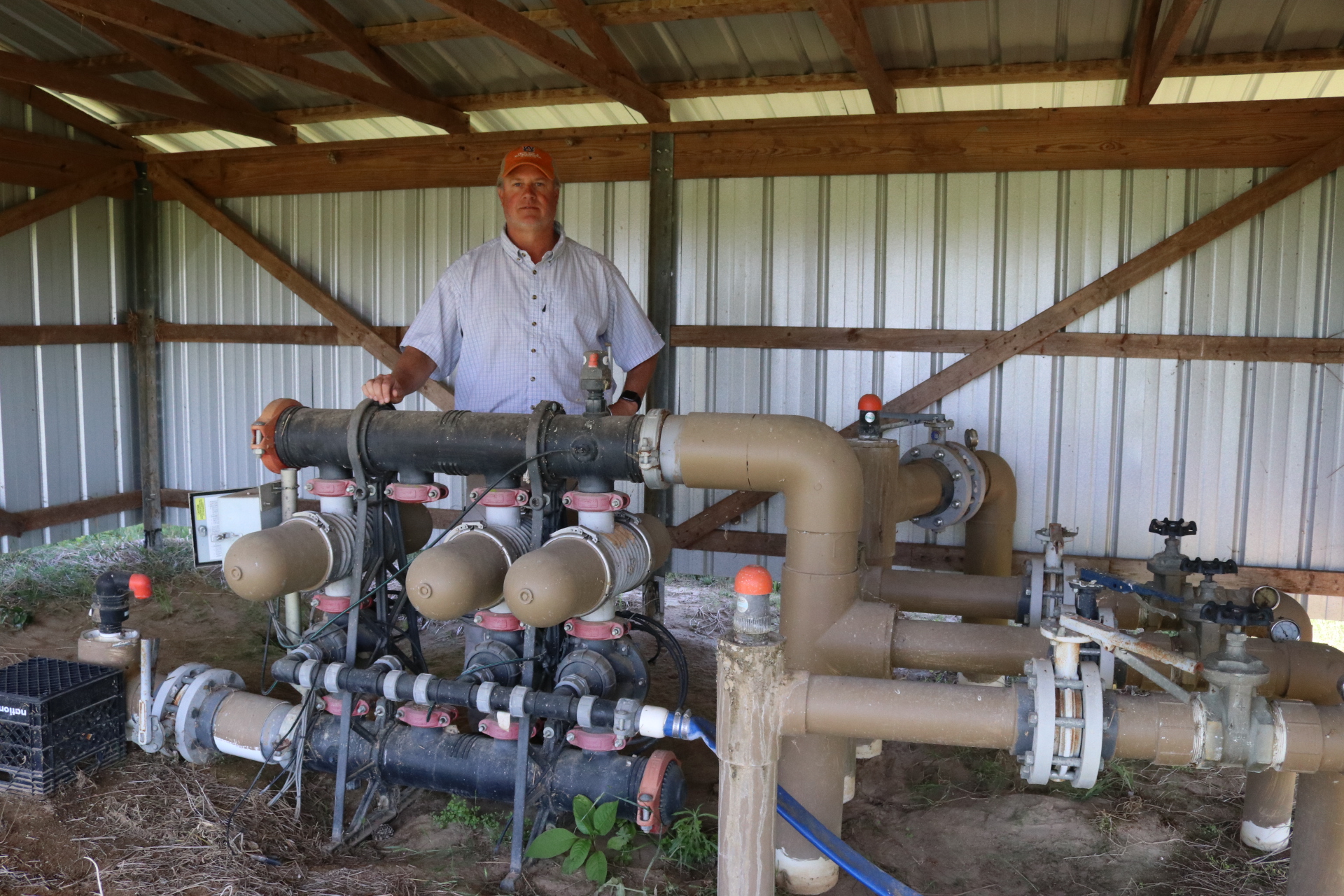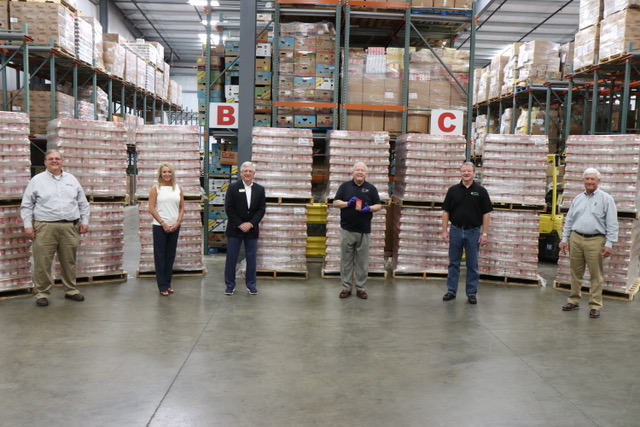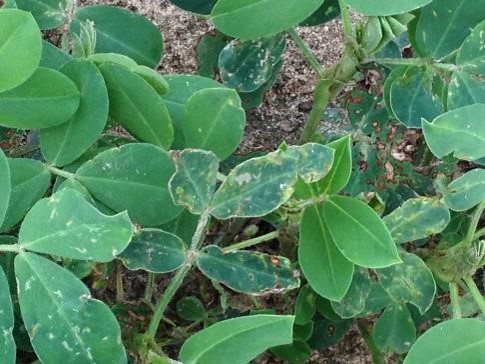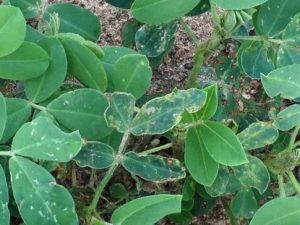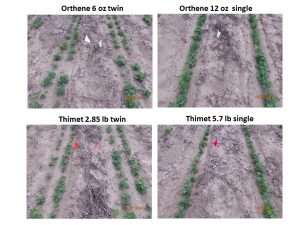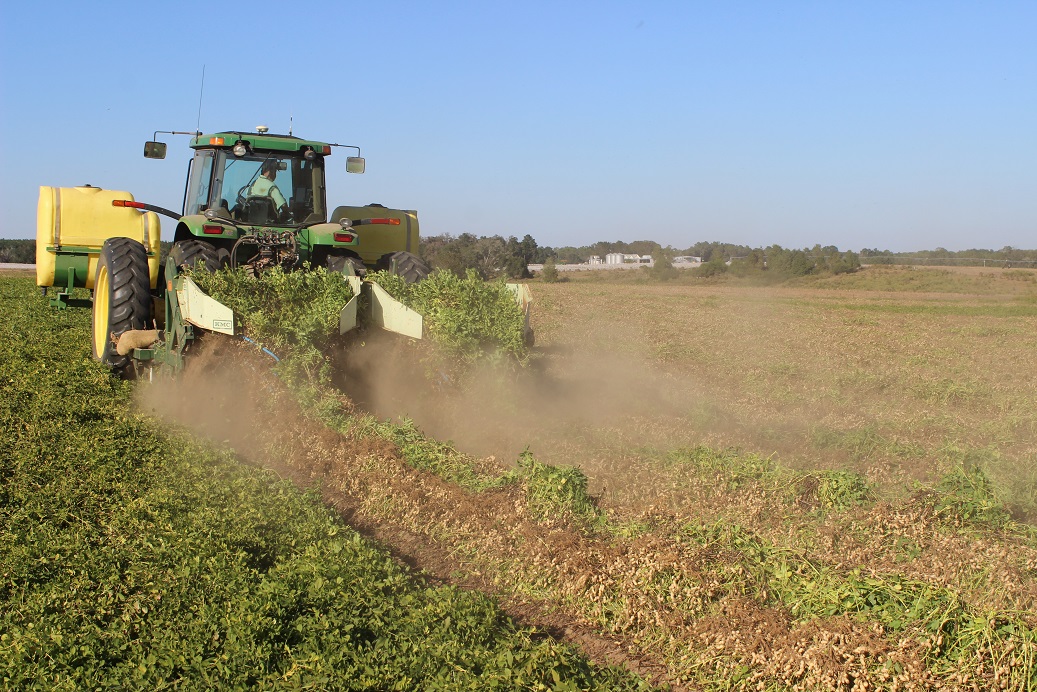Growers with small and irregular shaped fields may find an option with subsurface drip irrigation in their fields based on research from Auburn University.
Kris Balkcom, Extension Peanut Agronomist, from Auburn University, has been researching subsurface drip irrigation in peanuts since 1999 at the Wiregrass Research and Extension Center in Headland, Alabama.
He uses this research to give his best recommendations to growers on how to install a subsurface drip irrigation system. The details of his research include drip tape spacing, flow rate and the type of drip tape to use.
Drip tape spacing has been one of the main components of Balkcom’s research. “Should we have 3-foot tape spacing or 6-foot tape spacing?” Balkcom says. “Our research has shown us over the years that the 6-foot tape spacing is just as good as the 3-foot tape spacing.” He notes that it may take more time to get the water out because you have less drip tape and emitters, but the plus is having half the cost in your drip tape with 6-foot spacing.
Another component of subsurface drip irrigation research is the flow rate. Balkcom’s research has looked at a higher flow rate of 0.37 gal per hour compared to a lower flow rate of 0.26 gal per hour. “They are both very comparable. Obviously, the higher flow rate will get the water into the field faster,” Balkcom says. “But in the end the yield is basically the same using either flow rate.” Balkcom recommends going with the lower flow rate because it takes less horsepower to pump the water, although more time is needed to get the water out.
This subsurface drip irrigation research has looked at the type of drip tape to use, as well. According to Balkcom, there is regular subsurface drip tape, such as Netafim tape with a typhoon emitter, and Drip Net PC, which is a pressure compensating tape to fit irregular shaped fields with rolling terrain. Growers are able to put out an even flow of water from one end of the drip line to the other.
Balkcom encourages growers to consider installing subsurface drip irrigation systems in areas without wide-open fields or plenty of water underneath the ground to serve a center pivot irrigation system. “Here in Alabama we have a lot of small irregular shaped fields,” Balkcom says. “And with the exception of extreme Southeast Alabama, water is a lot deeper in the ground. It’s a lot more costly to get that water to feed those crops through a well.” With a subsurface drip system, growers do not have to have a high flow amount of water gallons per minute. Balkcom says growers can get by with a smaller well and block it off in different zones.
Subsurface drip irrigation is beneficial to growers in our region because of the following:
- It fits the fields – small, irregular fields and rolling terrain.
- Uses less water – can use a smaller well.
- No 3-phase power needed – most rural areas do not have access.
- No risk of damage or theft – everything is underground.
“One of the big turn-offs to subsurface drip is there’s no companies that go in and install subsurface drip,” Balkcom says. “It is some back-breaking work and hard work, but I think it’s certainly well worth what you get in the end using subsurface drip irrigation.” Balkcom says the engineers at the irrigation companies will design and draw out the system, and it is easy to follow, like putting a puzzle together.
Once the subsurface drip irrigation is installed it is a permanent fixture. The subsurface drip irrigation system at the Wiregrass Research and Extension Center has been in the ground since 1999. “When we started back in 1999 there were places in Texas that had tape for 20 years at that time,” Balkcom says. “That’s what made us interested.” The technology has changed over the years, but the tape lasts in the ground because it is not exposed to the sun and does not degrade.
Precision agriculture technology has made it where growers can plant their rows in the same place year after year using GPS features on a tractor. “Precision ag technology gives you the capability of being sub-inch accuracy from one year to the next to know exactly where you have something,” Balkcom says. “When we plow in the tape we know where it is, the tractor knows where it is ever year, so we can plant our crops accordingly to that and go in and not damage the tape.”
Another plus to subsurface drip irrigation is it does not have to be removed for digging peanuts. The drip tape can be plowed in at 13 to 14 inches deep for the Dothan sandy loam soil type with a clay base, and 10 to 11 inches deep for sandier soils. “With these depths we are plenty deep to be out in the field with any tillage or implements,” Balkcom says.
Growers interested in learning more about subsurface drip irrigation can contact Kris Balkcom at the Wiregrass Research and Extension Center (334-693-2010) or email him at balkckb@auburn.edu.
NOTE: This article was published in the May/ June 2020 issue of the Southeastern Peanut Farmer.

